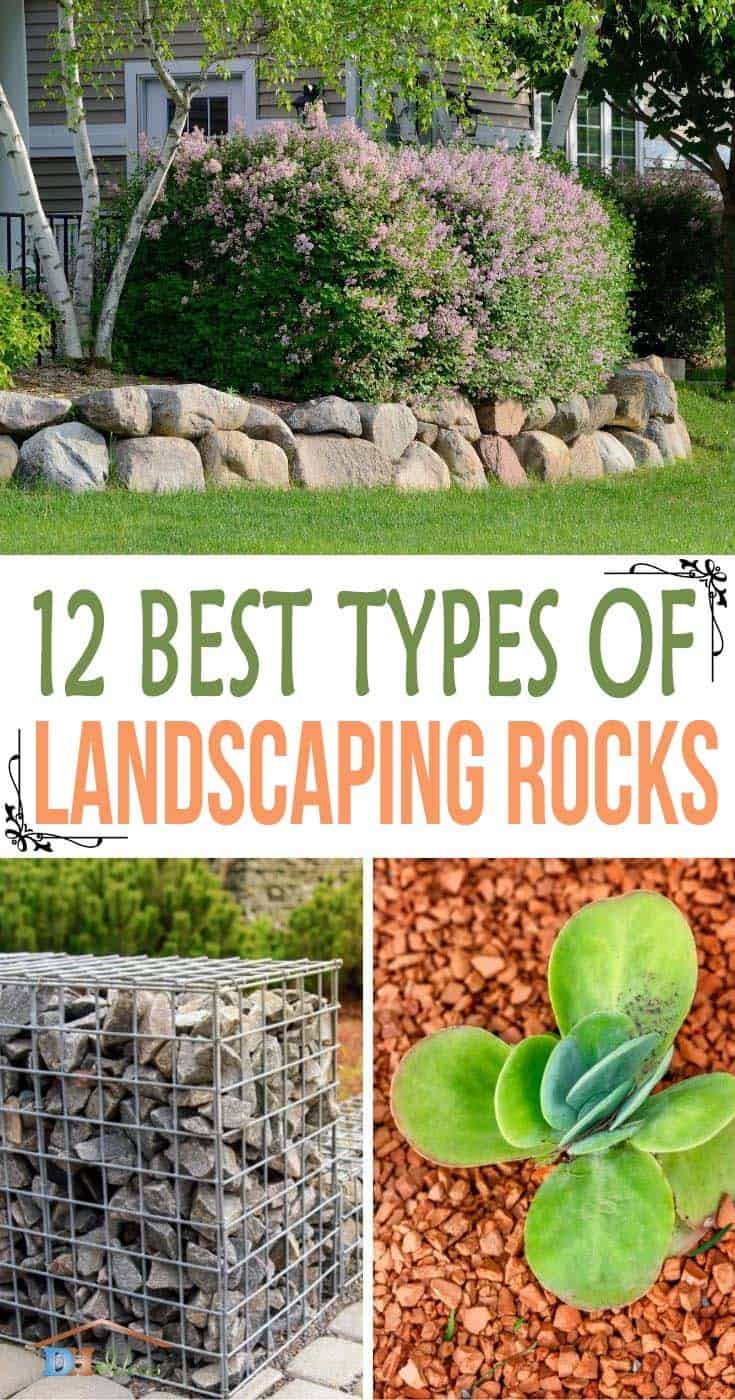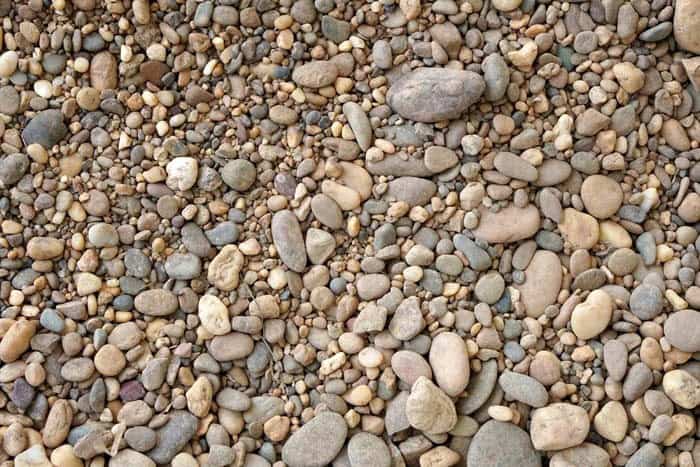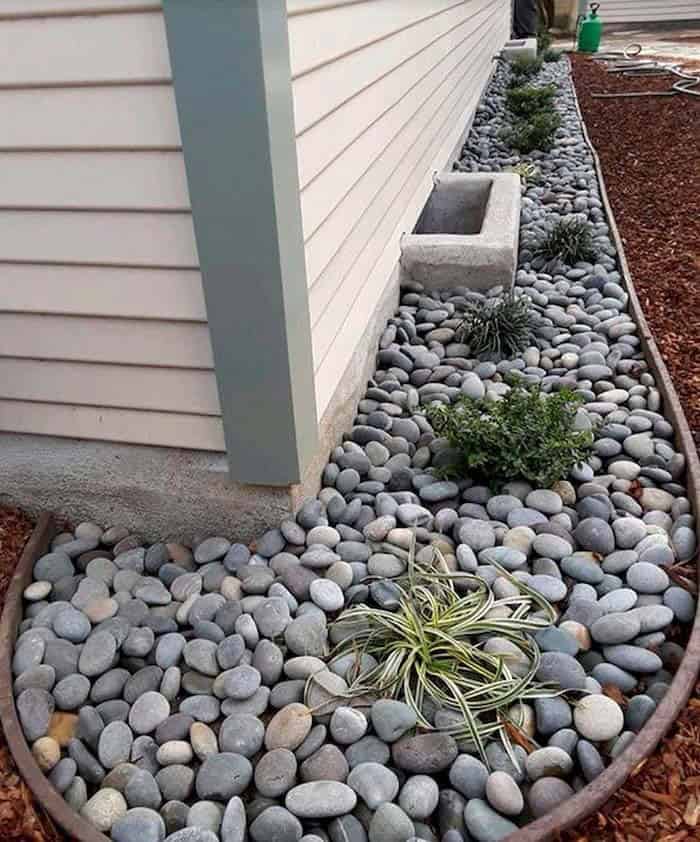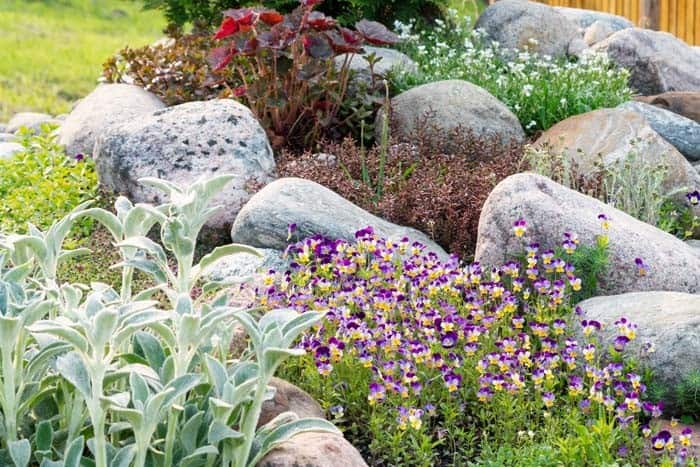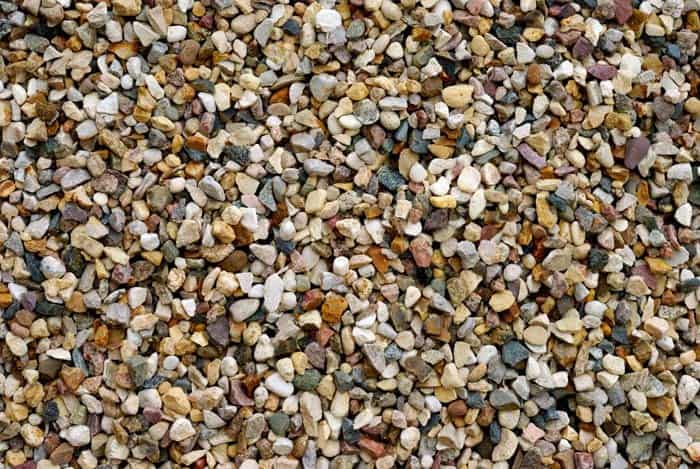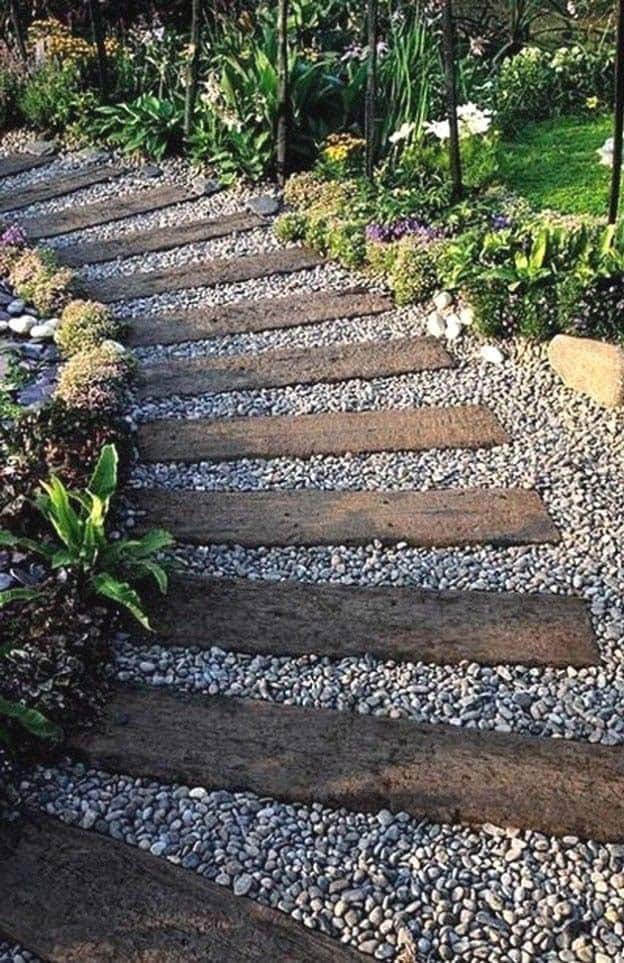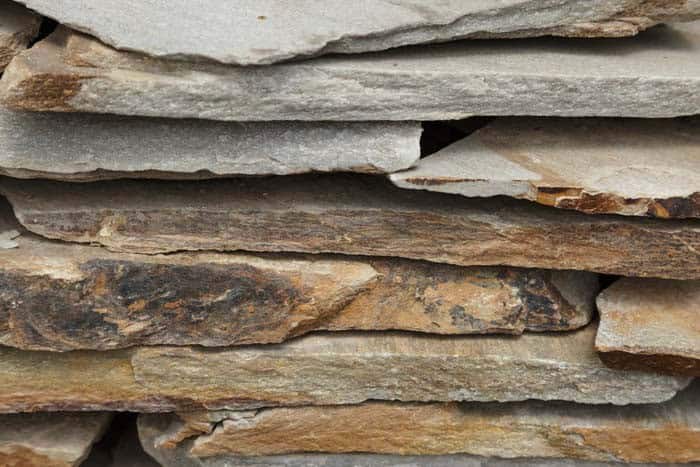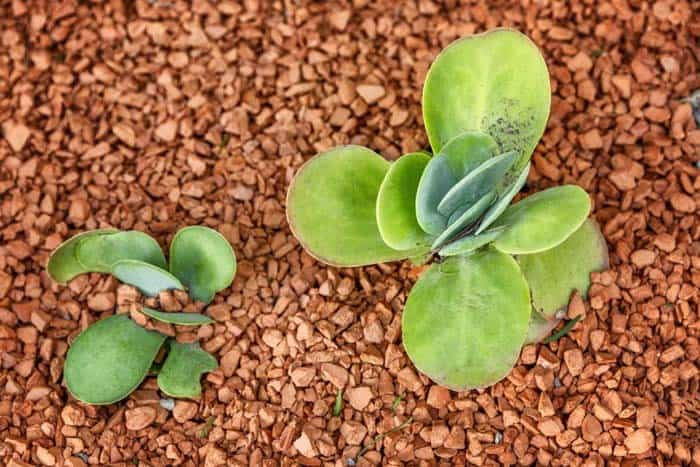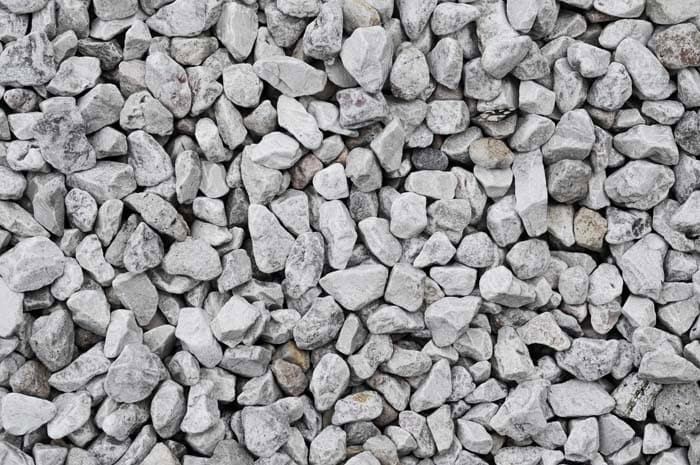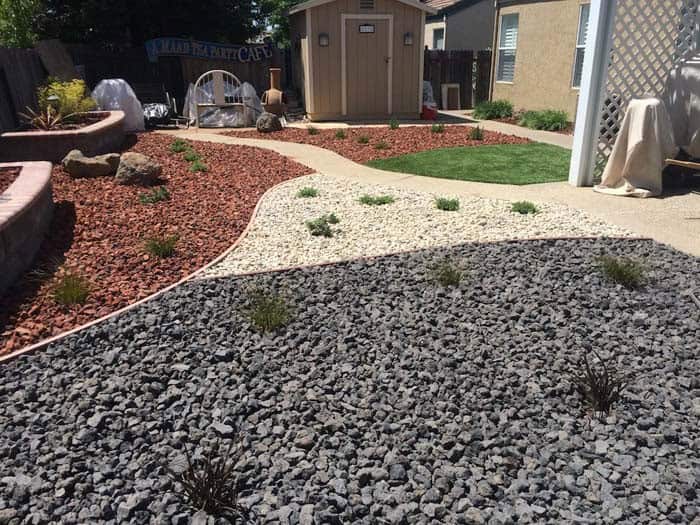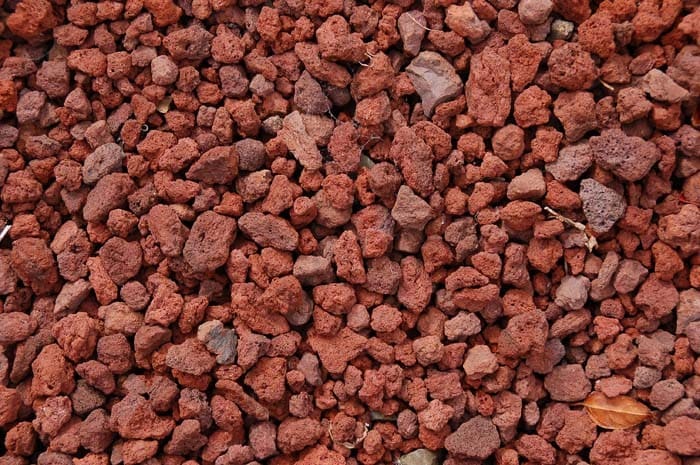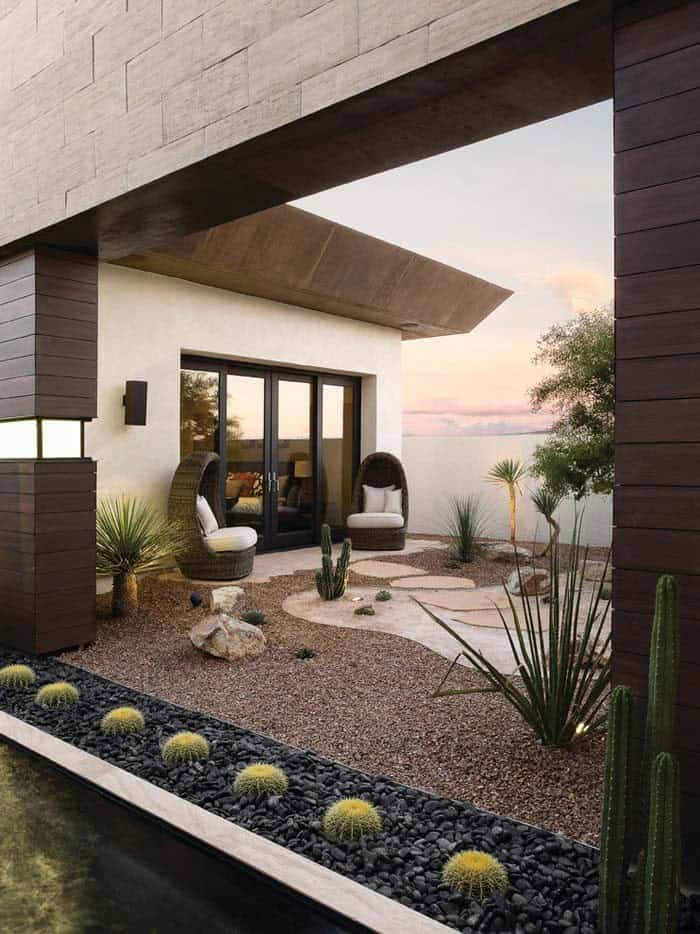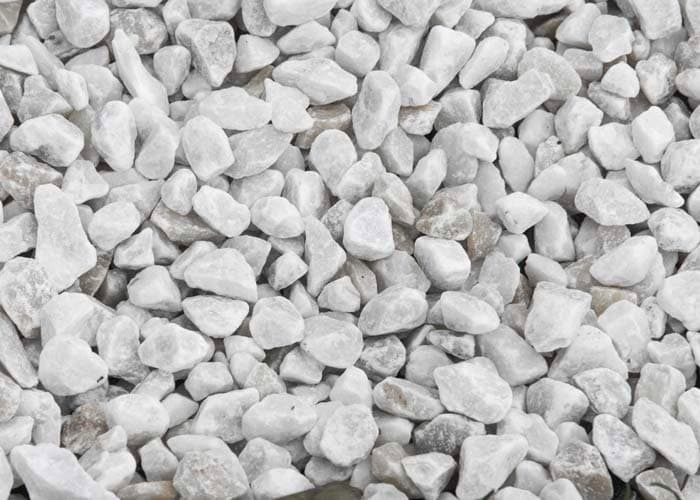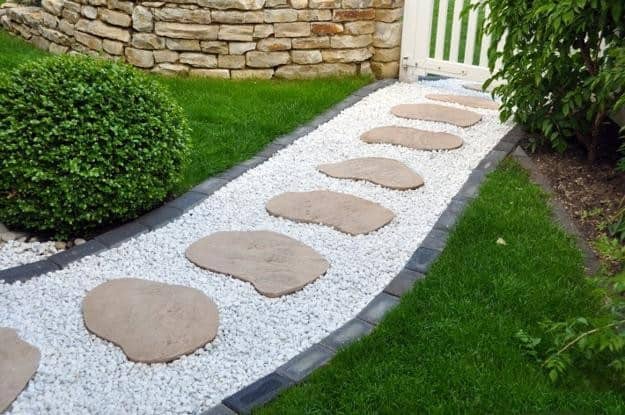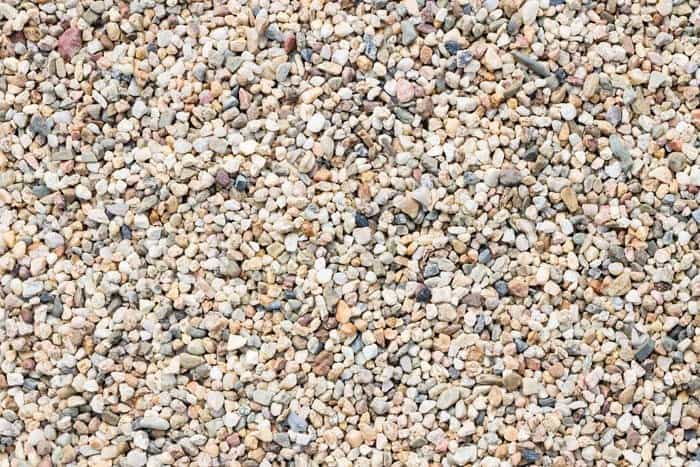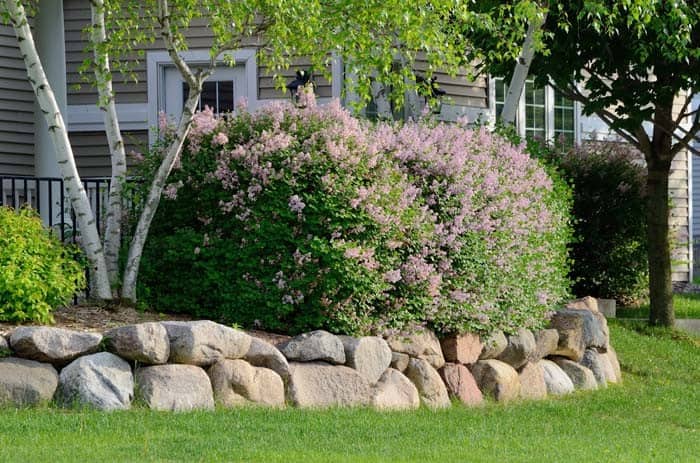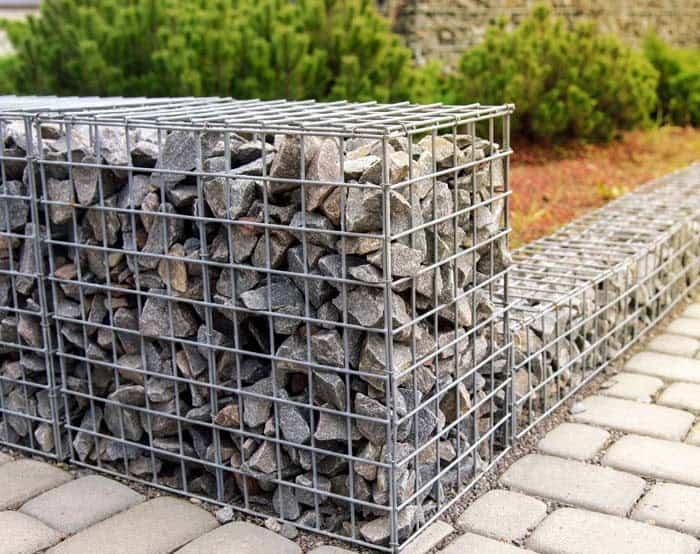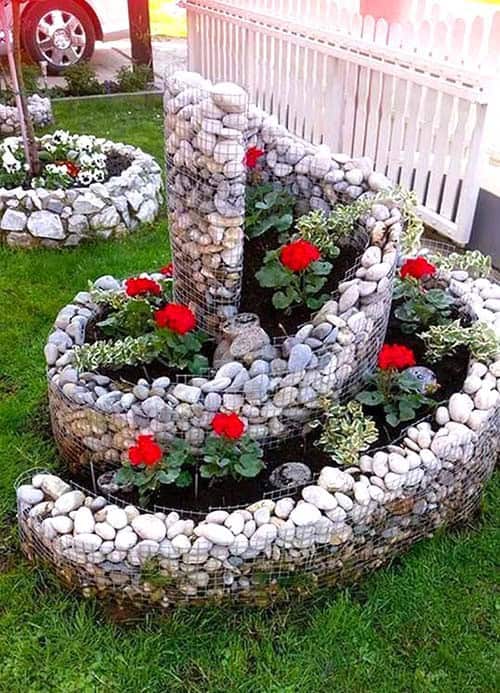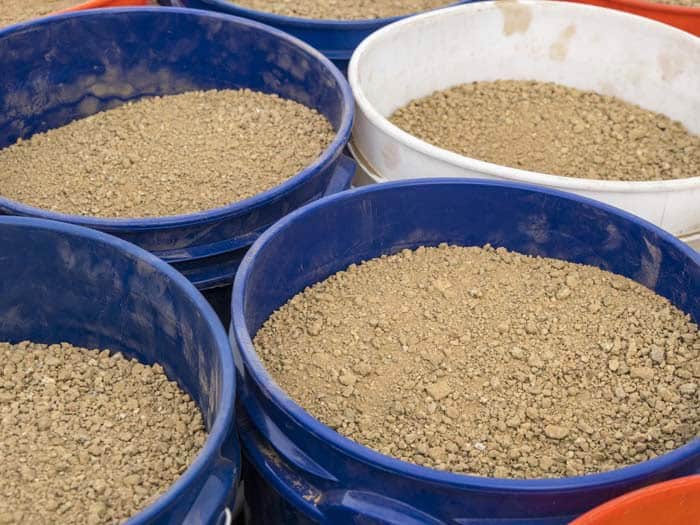Landscaping with rocks can be a daunting task, but it’s not knowing where to place them that’s the biggest hurdle – it’s finding the right type of rock to use. With so many options available, it’s easy to feel overwhelmed. To help you navigate this decision, we’ve put together a comprehensive guide highlighting the various types of landscaping rocks you can use in your next project.
River Rock
River rocks are a staple in many landscaped gardens, commonly used as an alternative to mulch. Their rounded, smooth surface and varied sizes make them a versatile decorative element. They pair particularly well with water features like fountains, where their natural beauty can be showcased. One of the most creative ways to utilize river rocks is by incorporating them into faux dry creek beds, adding a unique touch to your garden design.
While they do offer many benefits, one potential drawback is that weeds can be stubborn to remove. Nonetheless, when combined with lush plants, river rocks can create a stunning visual effect, as seen in this serene dry river bed setting featuring the natural beauty of these stones.
Boulders
When incorporating boulders into your outdoor space, consider leveraging them as the central attraction in a rock garden or addressing problem areas where grass struggles to thrive. These natural formations can also serve as retaining walls, helping to stabilize soil and prevent erosion. Given the cost of relocating boulders, it’s often more practical to design around existing ones in your yard rather than attempting to move them.
Pea Gravel
Pea gravel, consisting of small, smooth pebbles, is renowned for its ability to tackle even the most significant tasks. These tiny stones come in a range of natural hues and are often sourced from rivers and streams. When it comes to handling heavy foot traffic, pea gravel is an excellent choice for walkways, seating areas, playgrounds, and other spaces that require a durable yet aesthetically pleasing solution.
Its compact size also makes it a safe bet around fire pits, where the risk of tripping over larger rocks is minimized.
When used in conjunction with reclaimed wooden beams, pea gravel can create a visually striking pattern reminiscent of piano keys. Before constructing this type of walkway, it’s essential to prepare the soil by digging a bed with clear boundaries, ensuring a stable foundation for your project.
Flagstone
Flagstones are a versatile and popular choice for outdoor landscaping due to their smooth, flat surface. With countless quarries around the world producing different types of flagstone, there’s an option to suit every design style and project requirement. They can be used to create stepping stones on gravel paths, or dropped into the ground as a natural-looking feature. Additionally, flagstones can be stacked to form decorative retaining walls or used to build beautiful patios and pool areas.
For instance, a striking fountain was constructed using layers of flagstone, topped with soil and anchored by large rocks. The result is a stunning focal point that adds visual interest to any outdoor space. When it comes to redirecting rainwater, a well-designed drainage system is crucial. This can be achieved through the use of crushed gravel, which effectively channels water away from structures and into natural drainage areas.
Brick Chips
Brick chips are a versatile and effective tool for maintaining soil conditions. Unlike other mulch options, they excel at retaining water and regulating soil temperature. This is due to their unique composition – crushed and filtered broken bricks that come in various sizes. One of the notable benefits of brick chips is their resistance to insect attraction, deterioration, or fading.
You can incorporate them into your landscape design almost anywhere, from meandering walking paths to plant beds and even as a durable ground cover around sports facilities.
Crushed Stones (Gravel)
In the realm of landscaping, crushed stone and gravel are the unsung heroes, playing a crucial role as the foundation for various features. They provide a stable base for weed barrier coverings, serve as a level platform for stepping stones and stairs, and even form the base of water features. The difference between these two lies in their texture, with gravel exhibiting a smoother appearance due to natural forces shaping it.
In contrast, crushed stone is sourced from quarries as a byproduct of machine-cut stone, which is then cut down to size and marketed for use. This versatility makes them an ideal choice for creating rock gardens that can thrive in any climate, not just hot and dry regions. Furthermore, this type of landscaping offers a solution for stormwater accumulation issues in yards, making it a practical option for homeowners seeking a low-maintenance yet visually appealing outdoor space.
Lava Rocks
Lava rocks, as their name suggests, are formed when molten lava cools and crystallizes. This process gives them a unique range of earthy hues, with burnt red being the most prevalent. These natural wonders can serve multiple purposes in gardening, including drainage, water retention, and insulation of soil from extreme temperatures. Their durability is particularly noteworthy, as they resist decomposition and can be used in conjunction with weed barriers to suppress unwanted growth.
The fact that lava rocks don’t require replacement every year makes them an attractive alternative to mulch when it’s not needed. In modern gardens, black lava rocks are a popular choice. When paired with flagstone pavers, as seen in the accompanying image, they create a visually appealing and functional landscape. In this context, small golden barrel cacti can be used to add a pop of color and texture.
Marble Rocks
The allure of marble lies in its striking white color, making it a top choice among professional landscapers. Its resistance to cracking and fading over time makes it an ideal option for high-traffic paths and walkways. While it may be pricier than other landscaping solutions, using marble as an accent can elevate your garden’s aesthetic appeal. Furthermore, the alkaline properties of marble make it suitable for plants that thrive in such conditions.
Conversely, it’s best to avoid using marble around acid-loving plants. When used effectively, white marble can add a touch of brightness to areas with limited sunlight. It also pairs beautifully with black and red lava rocks, creating visually appealing patterns in rock gardens. The combination of white marble rocks, border bricks, and large stepping stones in the garden pathway demonstrates how contrast can create beauty.
To achieve this look, ensure the base beneath the gravel is well-leveled.
Beach Pebbles
While river rocks are known for their smooth surfaces, beach pebbles offer a similar experience with an added bonus – a range of vibrant colors. Among the most sought-after types are Mexican beach pebbles, prized for their versatility in gardening applications. Their smooth texture makes them an ideal choice for pathway creation, providing a comfortable surface for foot traffic.
Moreover, the array of colors they present makes them a popular option for defining garden beds, serving as a base for statues or water features, and adding visual interest to any outdoor space.
Retaining Wall Rocks
When it comes to building a retaining wall, rock selection plays a crucial role in creating a sturdy and visually appealing structure. Granite, limestone, and sandstone are among the most popular choices for retaining walls built with mortar. However, other options worth considering include small boulders, red brick, or even gabion walls that offer unique aesthetic appeal. Before commencing construction, it’s essential to consider the purpose of the wall, its intended height, and your budget.
Notably, setting medium-sized rocks in place using mortar requires more labor and effort compared to opting for larger boulders or gabion walls.
Gabion Rock Fences and Walls
Gabion walls are ingenious structures that utilize a combination of rocks and wire mesh to create a sturdy barrier against natural forces like landslides and erosion. As retaining walls, they can effectively contain soil and prevent it from being washed away. In hot climates, gabions can also function as a natural air conditioner by redirecting airflow through the gaps between the rocks.
When placed on top of eroded soil, these walls will actually strengthen over time as vegetation grows through the rocks, stabilizing the area further.
The unique design and versatility of gabion walls make them an attractive solution for homeowners looking to mitigate erosion issues in their small gardens or backyards.
Decomposed Granite
Decomposed granite, often referred to simply as DG, is an incredibly versatile rock option that can be used in a wide range of applications. Its unique characteristic lies in its breakdown into fine and small particles, making it an excellent choice for areas with drainage issues. One of the key benefits of using decomposed granite is its ability to add visual interest to any garden, whether formal or informal.
The variety of colors available ensures that you can find a perfect match for your outdoor space. In addition to being used as a decorative element, DG can also be employed to define separate areas within your garden, such as creating a clear path through a planting bed. Its small size and porous nature make it an ideal choice for this purpose, allowing water to flow freely while maintaining its integrity.
